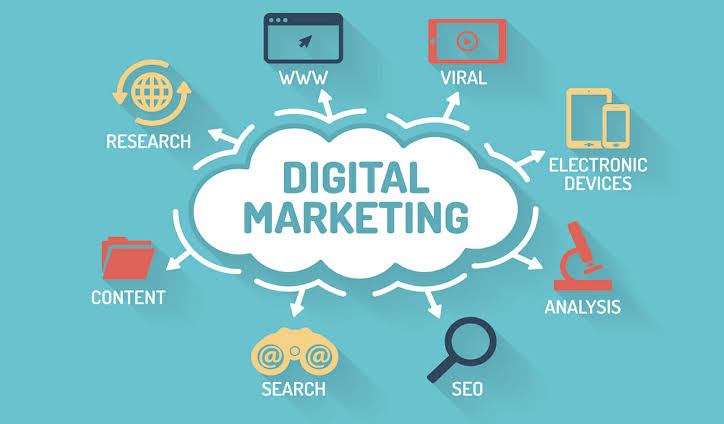Content Marketing Trends to Watch in the Digital Age
In the dynamic landscape of digital marketing, content remains king, but its form and distribution are constantly evolving. This essay explores the key content marketing trends that are shaping the digital age, highlighting their significance and potential impact on businesses’ strategies.

1.1 The Evolution of Content Marketing: Content marketing has transitioned from traditional forms like print media to an array of digital formats, such as blogs, videos, podcasts, and social media posts. As consumer behaviors change and technology advances, staying attuned to emerging trends is essential for maintaining a competitive edge.
1.2 Personalization for Enhanced Engagement: Personalization has emerged as a driving force in content marketing. Rather than offering generic content, businesses are leveraging data analytics to create tailored experiences. Personalized content resonates more deeply with audiences, fostering greater engagement and loyalty.
2.1 Video Content Dominance: Video content is at the forefront of content marketing trends. The explosive growth of platforms like YouTube and TikTok signifies the preference for visual and interactive content. Businesses are capitalizing on this trend by producing engaging videos that convey messages succinctly and authentically.
2.2 Live Streaming and Authenticity: Live streaming has gained momentum as an authentic way to connect with audiences in real-time. Live sessions on platforms like Facebook, Instagram, and LinkedIn offer businesses the opportunity to engage directly with their audience, address queries, and showcase behind-the-scenes moments.
3.1 Voice Search Optimization: With the rise of voice-activated devices, optimizing content for voice search is a trend on the horizon. Businesses are adapting their content strategies to align with natural language queries, ensuring that their content is discoverable in voice searches and positioned for the era of voice assistants.
3.2 Interactive Content Engagement: Interactive content, such as quizzes, polls, and interactive infographics, is transforming the passive consumer into an engaged participant. This trend capitalizes on audiences’ desire for interactive experiences, promoting longer engagement times and deeper connections.
4.1 User-Generated Content as Advocacy: User-generated content (UGC) has gained traction as a powerful content marketing tool. Encouraging customers to create content related to their experiences with a brand enhances authenticity, builds trust, and extends a brand’s reach through the advocacy of satisfied customers.
4.2 AI-Driven Content Creation: Artificial Intelligence (AI) is revolutionizing content creation by automating processes such as content generation, curation, and distribution. AI-driven tools can analyze data to predict content preferences, create personalized recommendations, and even draft content based on patterns.
5.1 Ephemeral Content and FOMO: Ephemeral content, content that disappears after a short period, is appealing due to its temporary nature and fear of missing out (FOMO) effect. Platforms like Snapchat and Instagram Stories leverage this trend, urging audiences to engage quickly before the content disappears.
5.2 Sustainability and Purpose-Driven Content: Consumers are increasingly drawn to brands that align with their values. Purpose-driven content that focuses on social and environmental issues resonates deeply with audiences, enabling businesses to communicate their commitment to sustainability and social responsibility.
6.1 Conclusion: Navigating the Digital Content Landscape In the digital age, content marketing is a dynamic and evolving discipline. Staying ahead of trends is crucial for businesses seeking to connect with audiences, foster engagement, and achieve their marketing goals. By embracing trends like personalization, video dominance, voice search optimization, and purpose-driven content, businesses can navigate the content landscape with creativity and strategic foresight.

Unveiling the Latest Content Marketing Trends in the Digital Age
Content marketing has undergone a remarkable transformation in the digital age, reflecting the changing preferences and behaviors of consumers. This essay delves into the latest trends that are reshaping content marketing strategies, illustrating their impact and offering insights into their application.
1.1 The Digital Revolution and Content Dynamics: The digital revolution has propelled content marketing beyond its traditional boundaries. Businesses now have an array of digital platforms to engage their audiences. Understanding these platforms and aligning content with consumer behaviors is key to harnessing the full potential of content marketing.
1.2 Personalization: The Power of Connection: The era of generic content is giving way to personalized experiences. Personalization involves analyzing consumer data to deliver tailored content that resonates with individual preferences. This approach fosters a deeper connection between brands and consumers, driving engagement and loyalty.
2.1 Video: The Visual Storyteller: Video content has risen to prominence, captivating audiences with its visual storytelling capabilities. From short-form videos on social media to longer-form content on YouTube, video engages consumers in an immersive and easily digestible manner, making it a focal point of contemporary content marketing.
2.2 Real-Time Interaction with Live Streaming: Live streaming offers an unfiltered and genuine way for businesses to interact with their audiences. Platforms like Instagram Live and Facebook Live enable real-time engagement, breaking down the barriers between brands and consumers and fostering a sense of authenticity.
3.1 Voice Search: A New Frontier: Voice search is redefining how content is discovered. As voice-activated devices become more prevalent, optimizing content for voice search is imperative. This requires understanding natural language queries and adapting content strategies to ensure visibility in voice search results.
3.2 Immersive Engagement through Interactive Content: Interactive content transforms passive audiences into active participants. Quizzes, polls, and interactive infographics offer an engaging and personalized experience, prolonging engagement and encouraging users to interact and share.
4.1 User-Generated Content and Social Proof: User-generated content (UGC) amplifies the voices of satisfied customers, fostering authenticity and trust. Businesses can encourage customers to share their experiences, turning them into brand advocates and leveraging the social proof that UGC provides.
4.2 AI’s Emergence in Content Creation: Artificial Intelligence (AI) is revolutionizing content creation processes. AI-powered tools can analyze data to predict content preferences, automate content creation, and tailor recommendations. This not only streamlines content production but also enhances personalization.
5.1 Ephemeral Content and Urgency: Ephemeral content, which disappears after a brief period, taps into the fear of missing out (FOMO) mentality. Platforms like Snapchat and Instagram Stories thrive on this trend, encouraging rapid engagement due to the transient nature of the content.
5.2 Purpose-Driven Content: Aligning with Values: Consumers gravitate toward brands that embody their values. Purpose-driven content, centered around social and environmental issues, resonates deeply with audiences and allows businesses to showcase their commitment to meaningful causes.
6.1 Conclusion: Navigating the Ever-Evolving Content Landscape Content marketing in the digital age is a dynamic and fluid domain. To succeed, businesses must embrace these trends while staying adaptable to emerging shifts. By embracing personalization, video storytelling, voice search optimization, interactive engagement, and purpose-driven content, businesses can thrive in the evolving content landscape.
